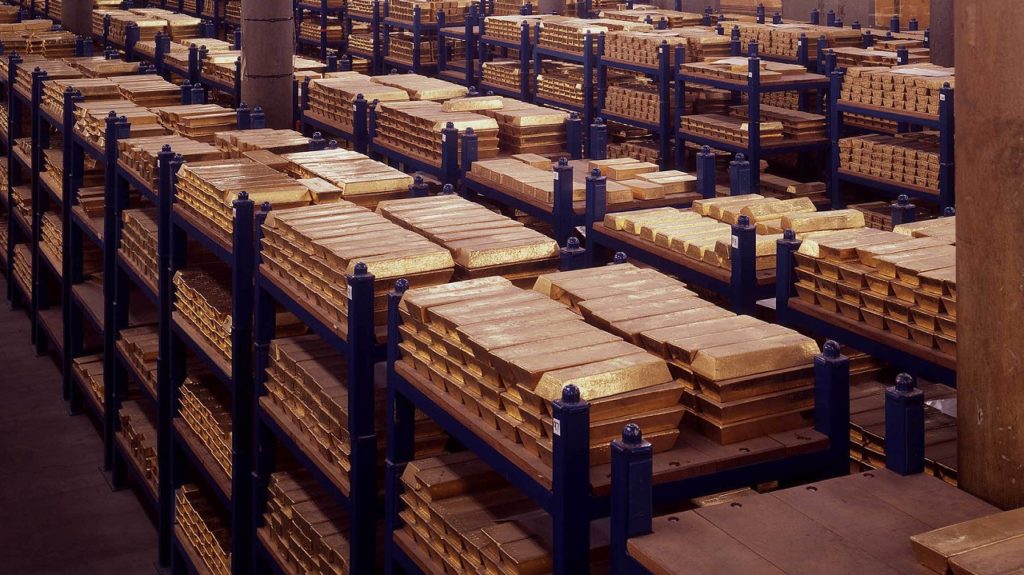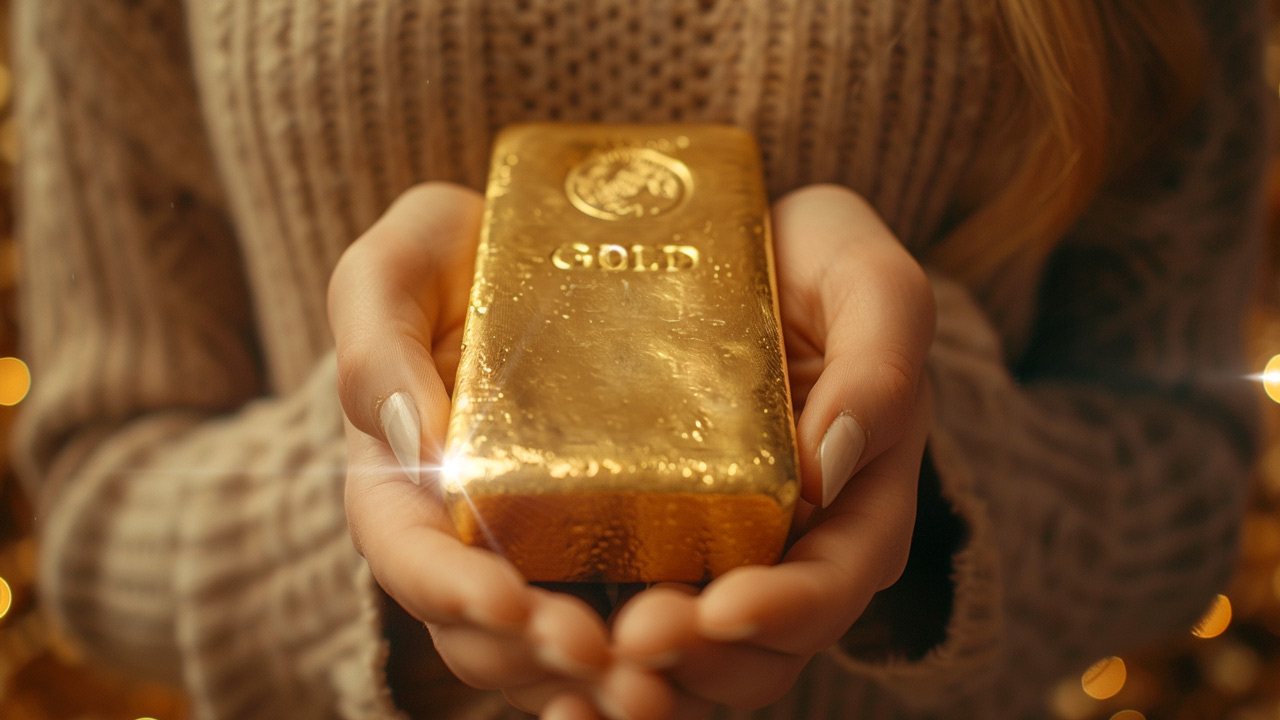Central Banks Add Another 69 Tons of Gold to Reserves in April
Central banks globally added another net 69.4 tons of gold to their reserves in April, according to preliminary numbers compiled by the World Gold Council.
Gold-buying by central banks slowed last year from the record pace we saw in 2018 and 2019. That trend has continued into 2021, but buying is ahead of last year’s pace as many countries continue to load up on the yellow metal.
Thailand was the big buyer in April, adding 43.5 tons of gold to its reserves, continuing the trend of one central bank stepping up to make a big purchase about every month. In March, Hungary bought 63 tons of gold, tripling its reserves. It was one of the biggest central bank gold buys in decades. In a statement, the National Bank of Hungary called gold “a crucial reserve asset.”
As it carries no credit or counterparty risks, gold facilitates reinforcing trust in a country in all economic environments, which still renders it one of the most crucial reserve assets worldwide.”
After several months of selling, Turkey reversed course and bought 13.4 tons of gold in April. Over the previous five months, the Turks sold 55.2 tons of gold, significantly skewing global net central bank gold holdings downward. Turkey has been dealing with a currency crisis.
Uzbekistan continued its gold-buying spree in April, adding 8.4 tons of gold to its reserves. The Uzbek central bank has been extremely active in the gold market in recent months. It sold 32 tons of gold last August as the country ramped up gold exports to generate additional income to cope with the COVID-19 pandemic, but has bought gold every month since. Since the big selloff, the Uzbek central bank has added over 65 tons of gold to its reserves.
Kazakhstan has been a steady gold buyer over the last couple of years. That trend continued in April as the Kasakh bank added 4.6 tons of gold to its reserves.
Kyrgyzstan bought 3.8 tons of gold in April.
Several other central banks made small gold purchases in April.
- Egypt – 0.1 ton
- Malta – 0.1 ton
- Mongolia – o.1 ton
Russia and Germany were the significant sellers. Russian reserves decreased by 3.1 tons. It was similar to the decrease we saw in January and relates to a government coin minting program. It is similar to programs run by other central banks and often results in small sporadic sales. In fact, Germany’s April gold reserve decrease of 1.3 tons was also related to coin minting, according to the World Gold Council.
The Czech Republic also made a small sale of 0.2 tons.
The People’s Bank of China has not reported any gold purchases in 17 months. It’s not uncommon for China to go silent and then suddenly announce a large increase in reserves.
According to the World Gold Council, year-to-date, central banks have collectively bought between 150-200 tons of gold on a net basis. The WGC says this confirms that there is still a healthy level of interest in gold.
This reinforces our expectation for continued healthy buying in 2021. While we cannot discount the possibility of more sales to come, we believe that the interest lies more on the buying side due to factors such as geopolitical risks, the economic impact of the pandemic, negative interest rates, as well as moves away from the US dollar.”
After record years in 2018 and 2019, central bank gold-buying has slowed in 2020 with net purchases totaling about 273 tons. It was the 11th straight year of net growth in central bank gold reserves.
The lower rate of purchases in 2020 was expected given the strength of central bank buying both in 2018 and 2019. The economic chaos caused by the coronavirus pandemic has also impacted the market.
Central bank demand came in at 650.3 tons in 2019. That was the second-highest level of annual purchases for 50 years, just slightly below the 2018 net purchases of 656.2 tons. According to the WGC, 2018 marked the highest level of annual net central bank gold purchases since the suspension of dollar convertibility into gold in 1971, and the second-highest annual total on record.





 Since Nayib Bukele became president of El Salvador, El Salvador has been in American media and global political discussion more than ever. While much of the attention focuses on Bukele’s mass incarceration of gang members and a decline in homicide of over 70%, Bukele has also drawn attention to his favoritism towards Bitcoin and how he […]
Since Nayib Bukele became president of El Salvador, El Salvador has been in American media and global political discussion more than ever. While much of the attention focuses on Bukele’s mass incarceration of gang members and a decline in homicide of over 70%, Bukele has also drawn attention to his favoritism towards Bitcoin and how he […] With gold hitting yet another awe-inspiring all-time high in the wake of Powell’s remarks reassuring markets (more or less) to expect rate cuts in 2024, a few analysts are pointing out risk factors for a correction — so is there really still room to run?
With gold hitting yet another awe-inspiring all-time high in the wake of Powell’s remarks reassuring markets (more or less) to expect rate cuts in 2024, a few analysts are pointing out risk factors for a correction — so is there really still room to run? Gold hit a new all-time nominal high, surpassing the previous record set in December of the previous year. The precious metal’s price reached approximately $2,140, indicating a robust and continuing interest in gold as a safe-haven asset, despite a rather peculiar lack of fanfare from the media and retail investors. This latest peak in gold […]
Gold hit a new all-time nominal high, surpassing the previous record set in December of the previous year. The precious metal’s price reached approximately $2,140, indicating a robust and continuing interest in gold as a safe-haven asset, despite a rather peculiar lack of fanfare from the media and retail investors. This latest peak in gold […] The gold price has been surging, with unprecedented central bank demand gobbling up supply. It has been a force to behold — especially as US monetary policy has been relatively tight since 2022, and 10-year Treasury yields have rocketed up, which generally puts firm downward pressure on gold against USD.
The gold price has been surging, with unprecedented central bank demand gobbling up supply. It has been a force to behold — especially as US monetary policy has been relatively tight since 2022, and 10-year Treasury yields have rocketed up, which generally puts firm downward pressure on gold against USD.  Total gold demand hit an all-time high in 2023, according to a recent report released by the World Gold Council. Last week, the World Gold Council (WGC) released its Gold Demand Trends report, which tracks developments in the demand for and use of gold around the world. Excluding over-the-counter (OTC) trade, 2023 gold demand fell slightly from 2022 […]
Total gold demand hit an all-time high in 2023, according to a recent report released by the World Gold Council. Last week, the World Gold Council (WGC) released its Gold Demand Trends report, which tracks developments in the demand for and use of gold around the world. Excluding over-the-counter (OTC) trade, 2023 gold demand fell slightly from 2022 […]